| |
| CAFE: Calar Alto
Fiber-fed Echelle spectrograph |
|---|
| |
|
| |
Summary of the Project
|
|---|
| |
|
The Calar Alto Fiber-fed Echelle spectrograph is an instrument
constructed at CAHA to
replace FOCES, the
high-resolution echelle spectrograph at the 2.2m Telescope of the
observatory. FOCES is a property of the Munich University Observatory, and it
has been removed from Calar Alto along 2010. The instrument comprises a
sustantial fraction of the telescope time at observatory, and it is due to
that it was taken the decission to build a replacement.
The basic characteristics of CAFE will be similar to those of FOCES. It will
share the same spectral range and resolution, and the basic optical
design. The main differences would be:
- CAFE will be installed in temperature and vibration control room, with a
much sofisticated neumatic stabilization system install in the optical
bench. This will guarantee a much better stability of the instrument,
increasing its performance and accuracy for velocity measurements of
fainter objects. The corresponding tests are still on progress, but the
selected location seems to fulfill the considered requirements.
- The optical design of the camera of the instrument has been optimized,
based on the knowledgement acquired with FOCES. We expect to increase the
efficiency of the instrument in at least a 10% due this new optimized design
- CAFE will be equiped with a new CCD camera,
and iKon-L,
with 2048x2048 pixels of 13.5 mu. This camera has a better QE, lower
readout-noise and higher read-out speed that the currently used in
FOCES. We expect to increase the efficiency of the instrument by 15% by
using this new CCD.
- TBDCAFE will be equiped with a Iodine-cell in order to perform self
calibrations of the velocity measurements. This equipement will allow CAFE
to perform observations with the accuracy required for the detection of
exoplanets.
The instrument was integrated by the end of 2010, and has passed through
its testing phase in the lab in the first months of 2011. It went to the
telescope for its first light the 24th of May 2011, and it will be deliver to the community along this year.
The instrument has been founded by the Spanish Ministery of Science ICTS
projects ICTS-2008-24 and ICTS-2009-32 (using FEDER funds), and by the Junta
de Andalucia Proyecto de Excelencia P08-FQM-0360.
|
The Consortium
|
|---|
| |
CAFE is built by a Consortium leaded by CAHA, integrated by members of the
Observatory of Munich University
and the Astrophysics Departement of
the University of Goettingen. The
current members of the collaboration are:
- Dr. Sebastian F. Sanchez (CAHA), PI of the project.
- Dr. Jesus Aceituno (CAHA), Project Manager and co-PI.
- Dr. Frank Grupp (USM), Design Advisor.
- Dr. Stefan Dreizler (UG).
- Dr. Jacob Bean (UG).
- Mr. Ulrich Thiele (CAHA).
- Dr. S.Pedraz (CAHA).
- Dr. L.Montoya (CAHA).
- Mr. D. Benitez (CAHA).
- Dr. M. Hernan Obispo (UCM), Science Advisor.
- Dr. D. Barrado (CAHA), Science Advisor.
The total estimated budget for the instrument, including both components and
hand-work is of 350k euros. Of them, 100k euros would be contributed by the
University of Goettingen. The remaining money has been provided by the CAHA
through requests of the PI to external Funding Agencies, with a cost near to
zero for Calar Alto.
|
| |
Progress of the Project
|
|---|
| |
The main achivements of the progress, so far, has been:
- Early 2008:The CAFE project was presented to the CAHA
Science Advisor Comittee in March 2008, and accepted by its members. The
decision of the SAC was transfered to the CAHA EC, which accepted the
construction of the instrument, with external funds (ie., to a zero cost for
Calar Alto).
- Late 2008:Funds were requested to the Spanish ICTS (Infraestructuras
Cientifico-Tecnologicas Singulares) Desing, Feasibility, Access and
Upgrade program, in April 2008. A total of 112.500 Euros was obtained for
the project (PI: Dr. S.F.Sanchez) to be expend along 2008-09 (November 2008).
- 1st quarter of 2009:The final design of the instrument was decided in early 2009, and
different components where requested, including the parabolic mirrors, the
fold-mirror, the new CCD, the holders, and the grating of the instrument. A
new neumatic system was acquired and integrated in the optical bench.
- 2nd part of 2009: The final location of the instrument has been
decided. The optical-bench with the neumatic system, and the holders and
mirrors that have already arrived has been integrated. The new CCD has
arrived. Extensive tests have been designed to characterize it. New
stability tests are on progress.
- August-October 2009:A new request to the Spanish ICTS DFAU programs
has been submitted by S.F.Sanchez, to cover the remaining costs of the
instrument (ie., 150k Euros). The request has been approved by the Spanish
Ministery of Science, so the total budget of the instrument is granted
(appart from contingencies).
- December 2009: The instrument camera has been requested to the
provided (PGO), to be deliver along 2010. The tests on the stability of the
final location selected for the instrument has been proved to be optimal.
- January 2010: Most of the components have arrived or they are on the process
to be acquired by the collaboration. The Univ. of Munich has agreed to let
us to use the old FOCES telescope module, which solves the problem of the
connection to the telescope focal plane. A final design for the grating
holder (modified to increase the stability), has been sent to the
manufacturer. A new enclousere has been designed and it is in the process to
be acquired. A new control electronic has been design and it is in the
process of manufacture for the old telescope module.
- June 2010: First mounting of the optical elements, appart from the
Camera. The Telescope Module has been redefined, adopting the old FOCES one,
and rearranging the space to allocate the future Iodine cell, currently
under development. Enclouse submitted.
- August 2010: PGO camera arrived safely to Calar Alto. Mounting of
the Camera purchase. First aligment tests of the elements before the
Camera. Enclouse modifed to allocate the camera (as foreseen). New
electronic of the telescope module tested.
- December 2010: Final assembling of the instrument in the Lab. New
electronic controls installed. Acquisition software under
development. Alignement of the optical elements started.
- March 2011: The instrument is finally assembled and aligned. Last
tests are performed prior to First Light in the telescope.
- May 2011: First light at the telescope. The instrument works
smoothly. It seems to have a better performance than FOCES. Extensive tests
are required.
- July 2011: Commissioning is going on. The instrument seems to
fulfill the expectations.
|
| |
|
| |
First Light (24/05/2011)
|
|---|
| |
| The instrument has gone to the telescope the night of the 24th of May
2011. The first observed objects was the bright star (V~6 mag)
HR4728. With 5 seconds of integration time, we got a extracted spectra
with a S/N~40 per pixel. |
| HR4738 Raw Data | Detail of a few orders |
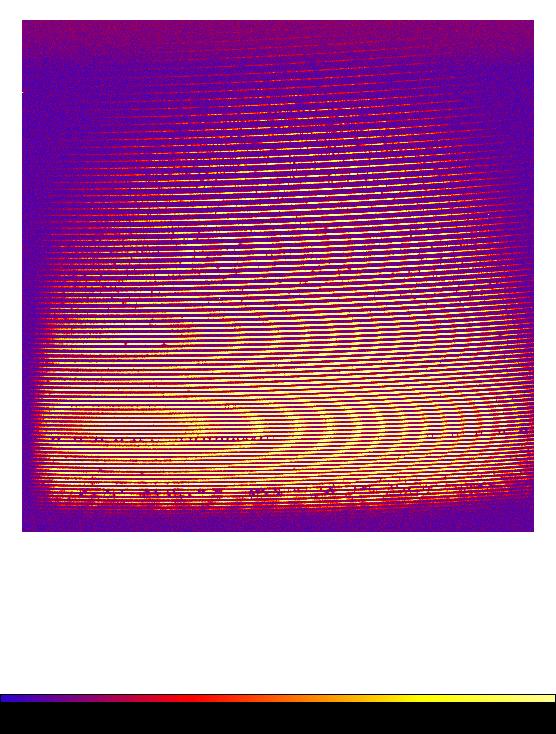 |
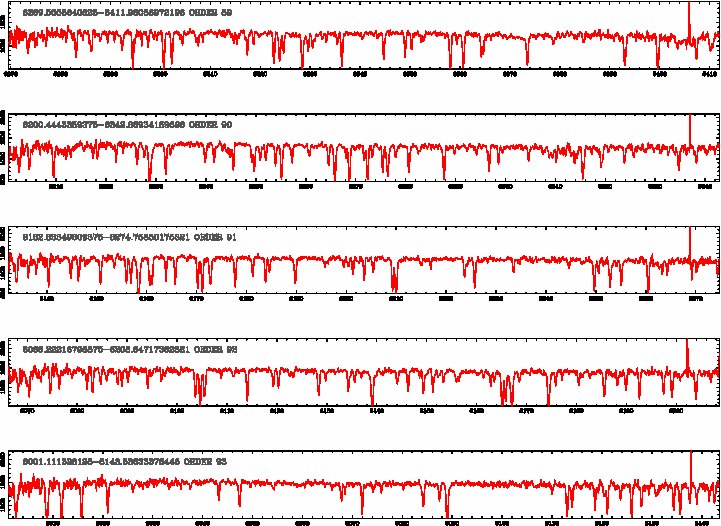 |
|
| |
|
| |
|
Early results of the Commissioning (12/07/2011)
|
|---|
| |
| CAFE, Identification of the
Orders: webpage |
| CAFE, Commissioning Report: PDF |
|
| |
Some Pictures of the instrument
|
|---|
| |
| We show here some pictures of the Instrument during its assembling period. |
| General view | iKon-L CCD and controller | Neumatic
System | Integration Update (06/2010) |
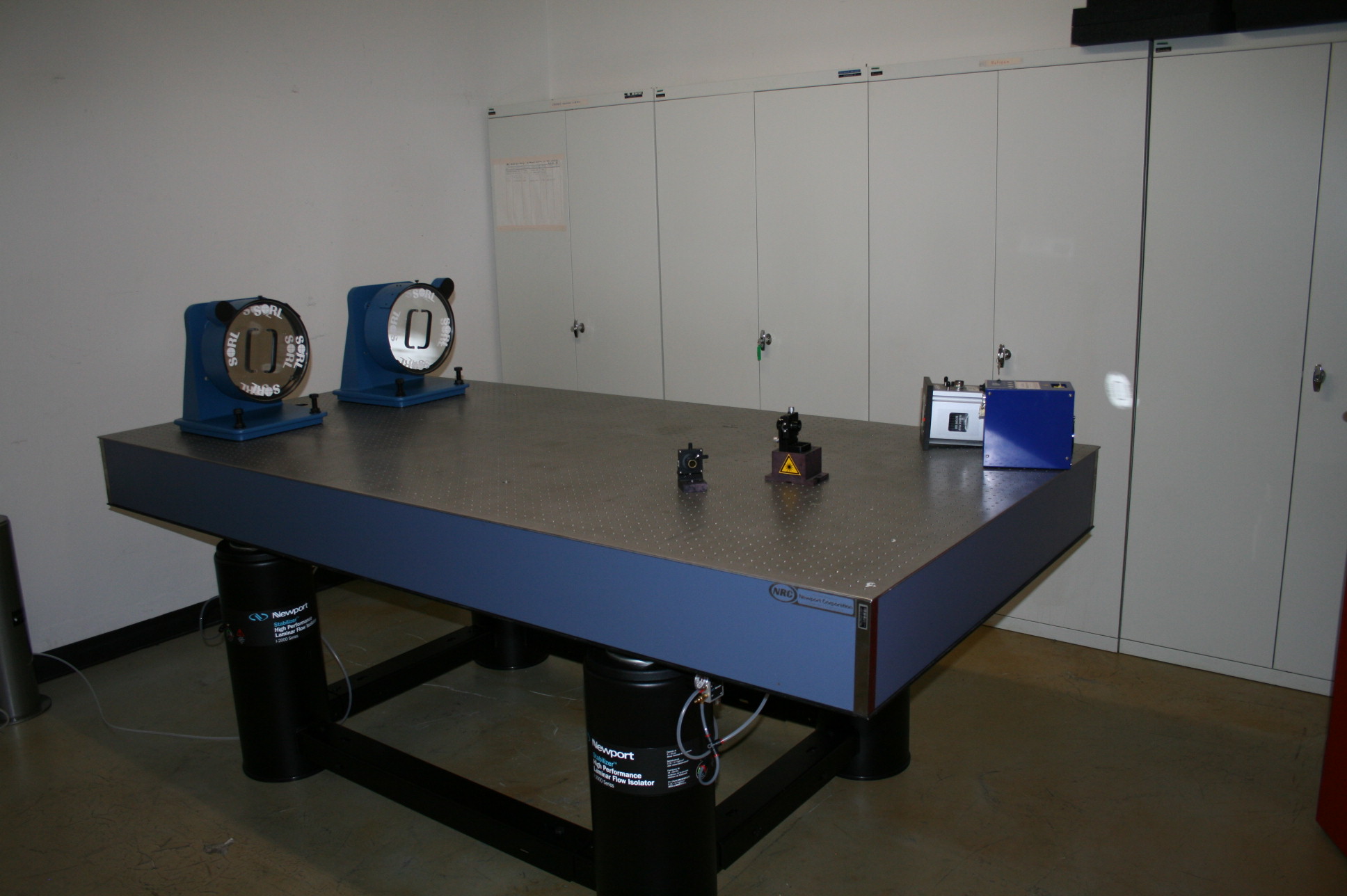 |
 |
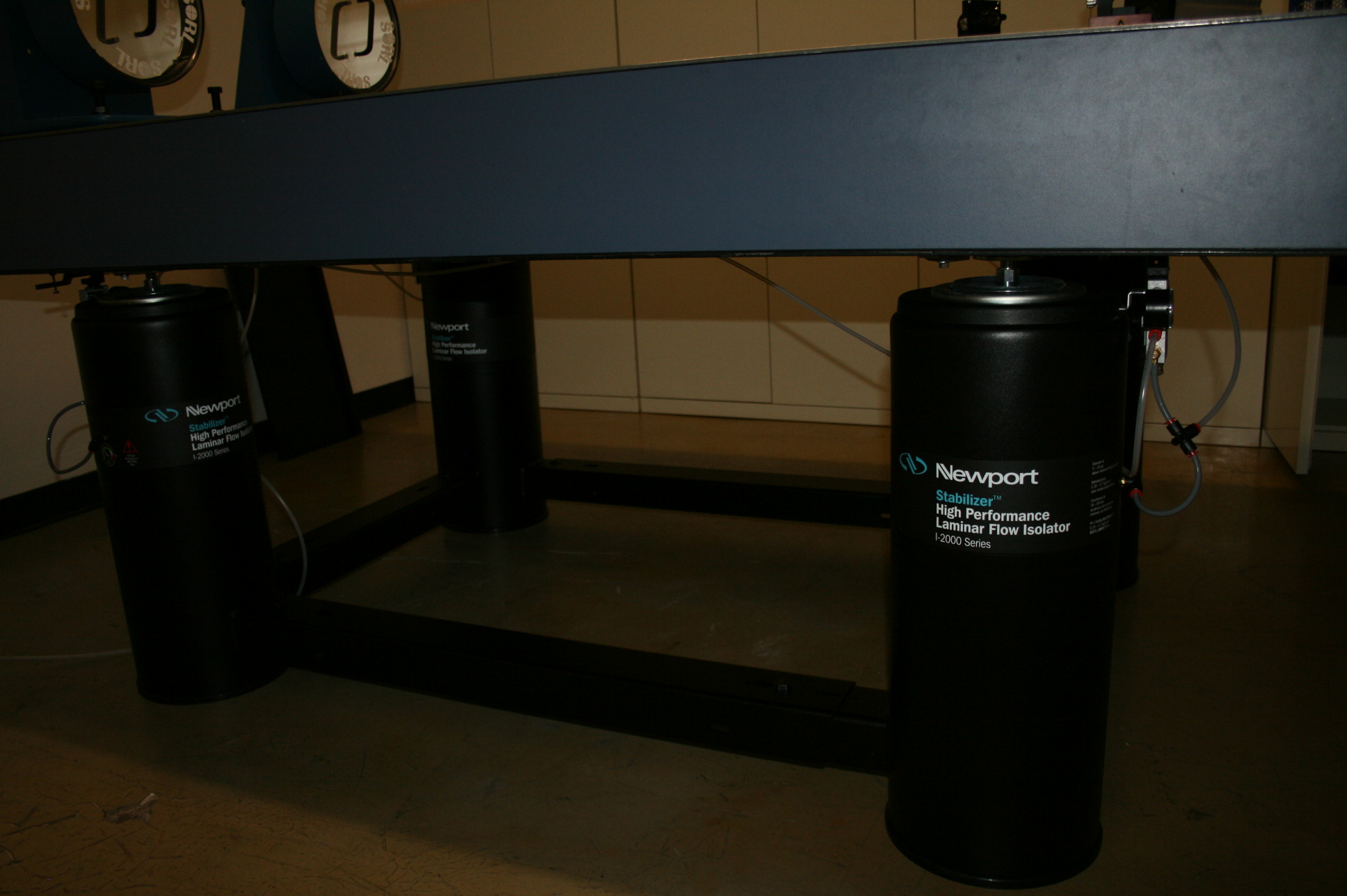 |
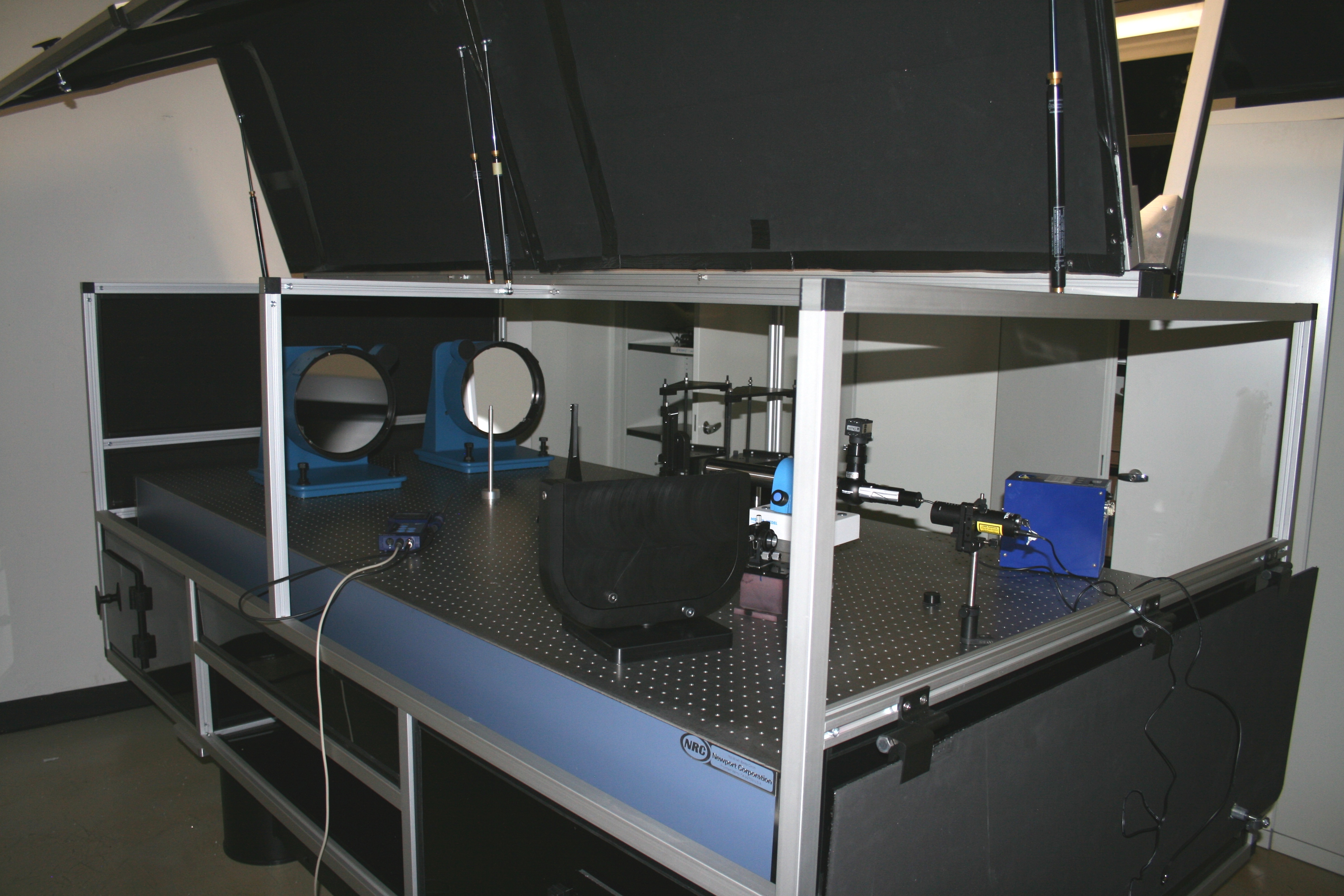 |
|
|
  |
Fondo Europeo de Desarrollo Regional, "Una manera de hacer Europa".
|
|




